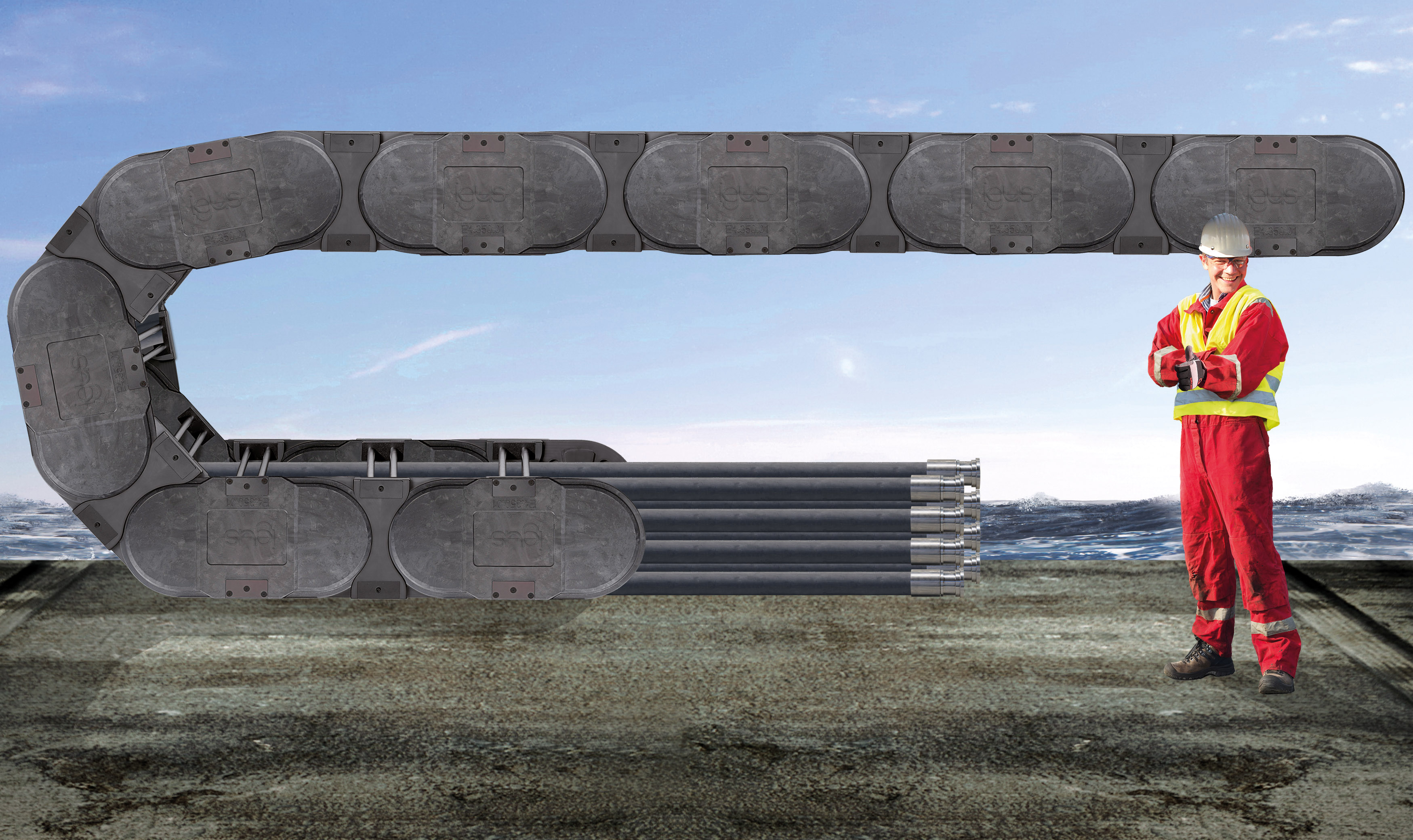Edited by Ken Korane • At the recent Bauma construction-equipment exhibition, the world’s largest trade fair, igus fittingly showcased the world’s largest all-plastic hose and cable carrier. The E4.350 energy chain features a durable construction and is designed to carry thick, heavy and stiff cables and hoses. It is especially built for use on rugged-duty machinery operating in harsh environments.
“It’s used on construction equipment, large mining machines, in the offshore oil industry, everywhere you have larges hoses and high loads,” explained Harry Suckau, industry manager for construction machinery at igus headquarters in Cologne, Germany.
Cable carrier for unsupported weights to 21 feet long
The E4.350 has a 13.78 in. (350 mm) inner height and interior width ranging from 7.87 to 39.37 in. (200 to 1,000 mm). It is made of polyamide-based material with excellent rigidity and a high load capacity—it handles fill weights exceeding 67.20 lb/ft (100 kg/m). Lab test show that the E4.350 withstands tensile loads exceeding 175,000 N without damage. And it is suitable for applications with unsupported carrier lengths of up to 21.3 ft (6.5 m). Thus, it has strength needed to safely guide large cables and hoses on cranes, coal conveyors and material-handling booms, Suckau noted.
Building the E4.350 of plastic, rather than of steel or aluminum, offers numerous advantages.
“One main benefit is you reduce weight by almost half by using plastic chains,” said Suckau.
That’s an important reason why energy chains made of high-performance plastics are replacing metallic options in more and more industrial applications, he explained. Plastic energy chains also better absorb vibration and run quieter, versus metal-on-metal constructions, and they are electrically insulating.

“Another benefit is you don’t have corrosion,” he noted. The high-performance material stands up to most chemicals, petroleum products and saltwater, and resists attack from UV radiation. It is also wear-resistant, self-lubricating and requires no grease or oil on joints throughout its service life, even in extremely dirty environments. This reduces the need for routine maintenance and enables a more accurate prediction of service life of the energy chain.
And compared to metal carriers, plastic versions can cost 25% to 50% less, added Suckau.
The E4.350 also has a modular structure, letting engineers customize the unit—for instance, it can be shortened or lengthened, as required. Interior separator fixtures and mounting brackets let users efficiently fill the space as needed, such as spacing small-diameter hoses away from large ones.
The E4.350 is also available in a rolling version for long travels. In a dredging operation in Antwerp, for instance, traverse length is 150 meters. Rollers made of proprietary self-lubricating plastic ensure nearly maintenance-free operation, significantly reducing wear and tear on the chain and increasing the service life, according to the company. The unit’s coefficient of rolling friction is around 75% less than the coefficient of gliding friction, so 57% less energy is needed to drive the chain. The E4.350 is available as a single component and as a fully-assembled system, and on request can be installed directly on site anywhere in the world.


Leave a Reply
You must be logged in to post a comment.